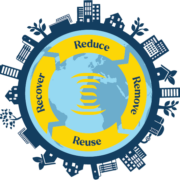Navigating the Waves of Change: Recent Water Regulation Updates in the United States
In the realm of environmental stewardship, water regulation plays a pivotal role in safeguarding precious water resources and ensuring public health. Over time, these regulations evolve in response to scientific advancements, changing societal needs, and emerging environmental challenges. In this blog, we explore recent water regulation changes in the United States, highlighting key developments and their implications for water management and conservation efforts nationwide.
The Clean Water Act: A Foundation for Environmental Protection
Enacted in 1972, the Clean Water Act (CWA) serves as a cornerstone of water quality regulation in the United States. The CWA aims to restore and maintain the chemical, physical, and biological integrity of the nation’s waters by regulating pollutant discharges into navigable waters and establishing water quality standards. Under the CWA, the Environmental Protection Agency (EPA) sets regulatory guidelines and collaborates with state and tribal governments to enforce water quality standards and implement pollution control programs.
Recent Regulatory Updates and Initiatives
Waters of the United States (WOTUS) Rule
One of the most significant recent developments in water regulation is the revision of the Waters of the United States (WOTUS) rule. The WOTUS rule, originally promulgated in 2015, defines the scope of waters protected under the Clean Water Act. In 2020, the EPA and the Army Corps of Engineers repealed and replaced the 2015 WOTUS rule with the Navigable Waters Protection Rule (NWPR). The NWPR narrows the definition of federally regulated waters, reducing federal oversight over certain ephemeral streams, wetlands, and other water bodies. Proponents argue that the NWPR provides regulatory certainty and reduces federal overreach, while critics express concerns about potential impacts on water quality and habitat protection.
Lead and Copper Rule Revisions
In December 2020, the EPA finalized revisions to the Lead and Copper Rule (LCR), which governs drinking water quality standards and lead contamination in drinking water systems. The updated LCR strengthens testing and reporting requirements, enhances corrosion control measures, and expands public notification and transparency provisions. The revisions aim to improve public health protections and reduce exposure to lead in drinking water, particularly in vulnerable communities disproportionately affected by lead contamination.
PFAS Regulation
Per- and polyfluoroalkyl substances (PFAS) are a group of synthetic chemicals widely used in industrial and consumer products, known for their persistence and potential adverse health effects. Recognizing the growing concern over PFAS contamination, the EPA has initiated regulatory actions to address PFAS pollution in drinking water and the environment. Efforts include monitoring and testing programs, research initiatives, and the development of regulatory standards for PFAS in drinking water and wastewater discharges.
Implications and Future Directions
Recent water regulation changes in the United States reflect ongoing efforts to adapt to evolving environmental and public health challenges. While these updates represent progress towards enhancing water quality and protection, they also raise questions and debates about regulatory effectiveness, stakeholder engagement, and equitable implementation.
As we navigate the waves of change in water regulation, collaboration among government agencies, stakeholders, and communities is essential to address complex water management issues effectively. By fostering dialogue, innovation, and collective action, we can strive towards a future where clean, safe, and accessible water is a fundamental right for all.
In conclusion, staying informed about recent water regulation changes and actively engaging in water policy discussions empowers individuals and communities to contribute to sustainable water management and environmental conservation efforts. Together, we can chart a course towards a more resilient and water-secure future for generations to come.
